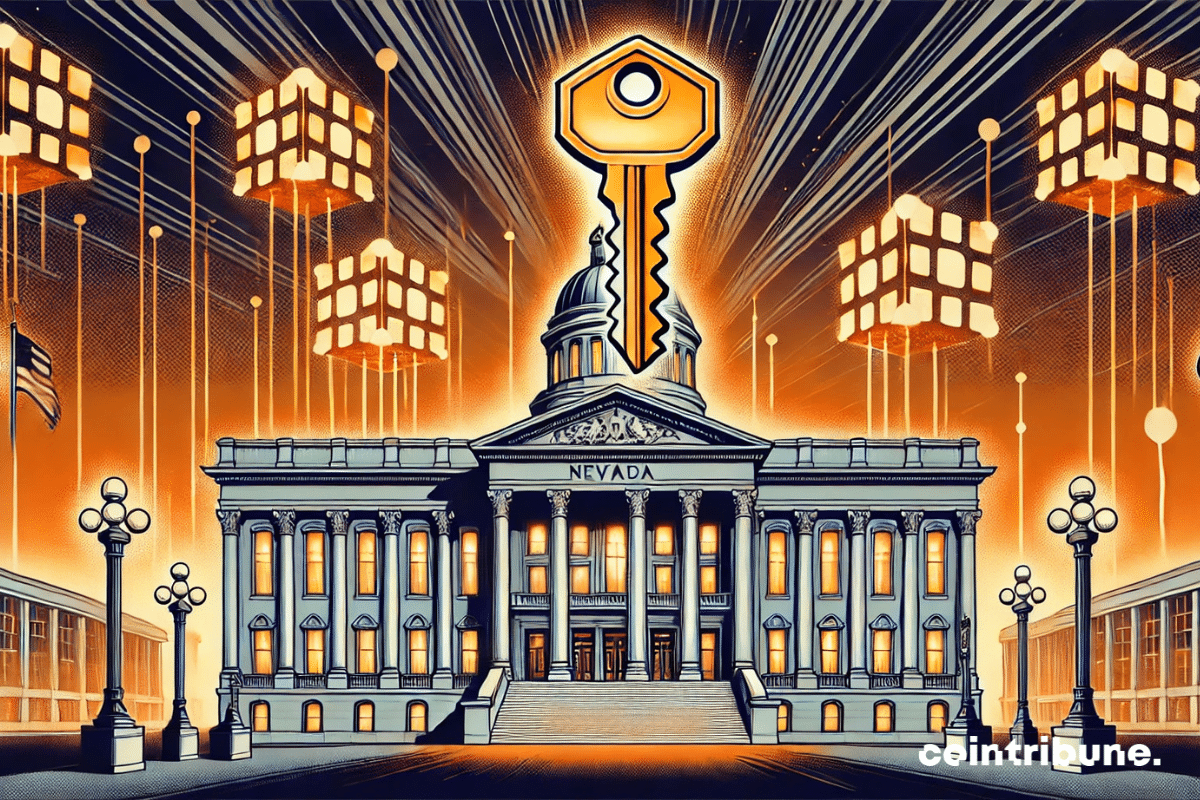The crypto market is going through an exceptional growth phase, driven by the spectacular surge of Bitcoin, which has now surpassed the historic threshold of 100,000 dollars. Indeed, long considered a difficult milestone to reach, this threshold has been achieved thanks to a combination of favorable economic factors. Recent inflation data in the United States, which shows a moderate increase in line with expectations, has reassured investors and reignited their interest in risk assets. At the same time, institutional enthusiasm for cryptos, symbolized by record inflows into Bitcoin and Ethereum ETFs, has reinforced this momentum. Thus, this recovery has also spread to altcoins, where assets like XRP, Dogecoin, and Solana are showing remarkable performances, confirming the overall excitement in the sector and triggering optimistic prospects for the coming months.
Quantum computing is back in the news and rekindles concerns that give us the opportunity to dive deep into the cryptographic underpinnings of Bitcoin.
Bitcoin is a force of nature, oscillating between hope and skepticism. Currently, the flagship cryptocurrency stands at a crucial crossroads: $98,000. This threshold is not merely a milestone, but a battleground where bulls and bears clash to define the future of the market. Optimistic players know that this level could mark the beginning of a new era, with an ambitious yet achievable target: $100,000.
As crypto wavers, an old companion whispers in the ears of traders: XRP and Dogecoin have not said their last word.
Shaktikanta Das, the outgoing governor of the Reserve Bank of India (RBI), expressed his optimism about the future of CBDC in the Indian economy, stating that the digital rupee could definitively replace the paper-based economy.
Ethereum reached the resistance of $4,000 before triggering a selling move. Let’s examine the future prospects for ETH. Ethereum Price Situation (ETH) Ethereum recorded a progression of over 47% this November. Indeed, ETH has experienced significant expansion since the support level of $2,400. This allowed it to reach and surpass…
The American elections have always represented a global symbol of democracy and stability. However, in the digital age, they face unprecedented challenges, exacerbated by technological developments and threats to the integrity of electoral processes. Recently, Nevada has been at the center of a major controversy related to accusations of "fake voters" during the 2020 presidential election. Although these accusations were dismissed, they highlighted critical flaws in the electoral certification system. In the face of this crisis of confidence, the state of Nevada made a bold decision by choosing blockchain technology to ensure the security and transparency of its elections. This adoption, hailed as a major advancement, aims to anchor electoral certifications in an immutable ledger, making any attempt at falsification practically impossible.
On December 10, several memecoins, including Dogecoin (DOGE), Shiba Inu (SHIB), and Dogwifhat (WIF), experienced significant declines, wiping out much of the gains made during the recent rally inspired by Donald Trump. This drop brought the total market capitalization of the crypto memecoin market to a three-week low of $119.6 billion.
In November 2024, Raydium, a decentralized exchange (DEX) native to Solana, surpassed Uniswap in terms of monthly volumes for the second consecutive month, according to a crypto report. Discover the impressive figures behind this success!
For several months, investors have been turning their attention to crypto ETH, hoping for a significant jump in its value. However, forecasts do not seem to favor the giant of smart contracts. According to the onchain options protocol Derive, the probability that Ethereum will reach $5,000 by the end of 2024 is less than 10%. This observation is striking, especially since massive inflows into spot Ether ETFs seem insufficient to reverse the trend.
A fascinating chaos is shaking the crypto world: Coinbase, as an improbable puppeteer, triggers a ballet of $1.6 billion in liquidations, leaving traders and altcoins in tatters.
The regulation of cryptocurrencies continues to redefine the contours of a rapidly changing sector. In this dynamic, Ripple, one of the leaders in blockchain solutions, has just received historic approval from the New York Department of Financial Services (NYDFS) for its stablecoin RLUSD. This approval comes after several months of deliberations, consolidating Ripple's position in a highly competitive market. As stablecoins increasingly play a strategic role in digital finance, this development raises notable questions: how does Ripple plan to capitalize on this regulatory validation? Can this advancement reshuffle the deck against major players like Tether and Circle? The stakes are immense, both for the future of RLUSD and for the entire stablecoin ecosystem.
For years, Bitcoin has established itself as a central topic in economic and financial debates, deeply dividing opinions. For its supporters, it represents a monetary revolution capable of redefining the rules of the global financial system. Conversely, its detractors denounce its volatility and the risks it engenders, deeming it incompatible with prudent investment strategies. Indeed, Microsoft has added a new episode to this controversy. During its annual meeting, the company's shareholders rejected an ambitious proposal aimed at including Bitcoin in the cash reserves of the tech giant. This decision, made in a context of particularly unstable financial markets, raises questions about the role of cryptocurrencies in the asset management strategies of large companies. Between the opportunity for diversification and caution in the face of uncertainty, the debate intensifies and reflects much broader stakes for the future of cryptocurrencies in the global economy.
The world of cryptos and tokens is constantly evolving, and for those looking to embark on this adventure, the new book by Alexander Rees-Evans, "How to Launch a Token: An Essential Guide for the Uninitiated", is an indispensable resource. This practical guide, published by Springer, offers an in-depth dive into the necessary steps to successfully launch and manage a crypto token.
Faced with the icy winds of inflation, Vancouver weaves a digital web: bitcoin, a bold weapon, guards treasures against the monetary storm.
The turbulence in financial markets amplifies the concerns of investors, who are seeking assets capable of withstanding economic and geopolitical uncertainties. In this context, Bitcoin, gold, and silver emerge as strategic havens. These three assets embody a concrete response to the threats posed by rising public deficits, persistent inflation, and the fragility of traditional bonds. Brian Russ, Director of Investments at 1971 Capital and a recognized expert, sheds light on the emergence of this new dynamic. He analyzes the growing role of these assets in the reorganization of investment portfolios.
After the United States and Brazil, it is now Russia's turn to consider integrating bitcoin into its foreign exchange reserves!
Amidst the upheavals of the crypto market, a wisdom awakens: the lows extend, and opportunities whisper to the bold.
As uncertain eyes look towards 2025, the future of Ripple (XRP) appears promising. Optimistic forecasts estimate that the price of the XRP crypto could explode and reach $100 by 2025! Here are four main reasons supporting this prediction.
The crypto sector has just crossed a significant milestone with the announcement from Riot Platforms, a major player in Bitcoin mining. Indeed, the company aims to raise 500 million dollars through a convertible bond issuance. This project comes at a time when the iconic cryptocurrency is approaching its historical highs, generating renewed interest from institutional investors. Thus, this strategy emphasizes Riot Platforms' desire to consolidate its dominant position in a market where competition is intensifying.
Eric Trump, son of American president Donald Trump, recently expressed his belief that traditional banking systems are outdated and that crypto and blockchain technologies will soon surpass them. In a recent interview, Eric Trump highlighted that blockchain technology can perform all the functions of modern banking systems, but in a more efficient, faster, and cost-effective manner.
The crypto market is hit by a new wave of turbulence. In just 24 hours, nearly 760 million dollars were liquidated, including 200 million in just one hour. This brutal movement, a symptom of a constantly bustling market, reflects the vulnerability of leveraged positions to sudden price fluctuations. At the same time, this situation highlights the significant challenges investors must face, balancing risk management and heightened volatility.
At the Bitcoin MENA conference in Abu Dhabi, Changpeng Zhao (CZ), former CEO of Binance, stated that it is "inevitable" for China to establish a strategic reserve of Bitcoin (BTC). CZ emphasized that while China's stance on cryptocurrencies is difficult to predict due to the government's lack of transparency, it is likely that the country is secretly accumulating bitcoins.
Is El Salvador going to abandon its law requiring all businesses to accept bitcoin? That is what the IMF is demanding in exchange for its loans.
This Monday, December 9, 2024, around 3 PM UTC, Bitcoin reached an all-time high of $103,900, fueling hopes for a sustained bull run. However, within a few hours, this momentum was shattered. The price of Bitcoin plummeted dramatically to $98,015, dragging down the entire market of major crypto assets with it. This reversal, far from being trivial, sparked numerous questions among investors. While some hoped for a simple temporary correction, others see it as a negative signal for the future. This situation is accompanied by a climate of increased volatility, exacerbated by massive sell-offs and record liquidations.











































